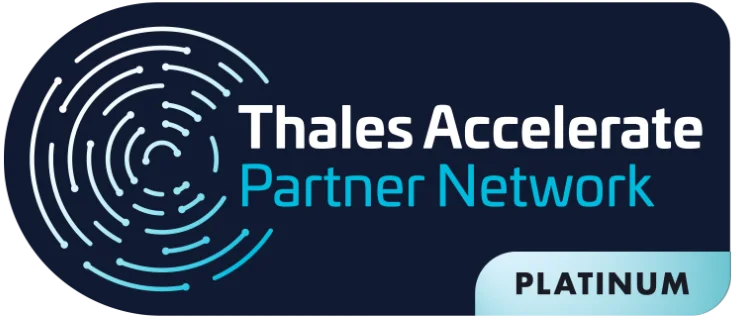One of the most pressing questions for banks, financial system operators and regulators is how to increase speed without sacrificing safety. In this new landscape of instant payments, can technology contribute to the prevention of scams involving Pix, rather than simply speeding up payments?
When the Central Bank of Brazil recently launched the instant payments system, scams involving Pix immediately occurred.
This new form of instant payments is a new paradigm in the way financial transactions are made, delivering 24/7 payment transfers in a matter of seconds.
But unfortunately, instant payments can open the door to real-time fraud.
Scams involving Pix can take different forms
Instant payments allow sellers and buyers to exchange money and purchase services in seconds. The funds are received in the beneficiary’s bank account almost immediately, instead of taking a few working days.
This can make a significant difference to a small business’s cash flow, in particular, and means less time spent waiting for money to clear from a buyer’s point of view.
Indeed, fast transactions are a common requirement in the new economy, especially with the rise of mobility: today’s generations of customers want to be able to make payments anytime, anywhere, using their mobile devices.
However, at the same time that financial institutions are rolling out new, faster payment solutions, they are struggling with new types of fraud and the rise of tactics such as email compromise.
Typically, a fraudster will intimidate, persuade or entice you to fork out money or valuable personal identifying information by pretending to be a person you know or an institution you trust.
The digital criminal may pretend to be a bank representative on a phone call and ask for your checking account login. He or she may pose as a government official and threaten to throw you in jail unless you pay for “taxes owed”.
The fraudster may even pretend to be a charity and trick you into donating funds to a fake organization. Scammers tend to thrive on uncertainty and panic. And with Pix, it will be no different, they will take advantage of their weaknesses.
Fighting Pix scams: a balancing act
How can you protect yourself from scams involving Pix? Here are several common sense steps consumers can take to ensure they don’t get scammed by a scammer.
1. Think before you click on a link or download an attachment
Think carefully before clicking on any link or downloading any attachment in an email or website, security experts say, even if it’s from someone you know.
Scammers and hackers hijack email addresses to send you bad links, and then use them to install malware on your computer or trick you into providing valuable personal information.
If an email seems incomplete, think twice before interacting with it. Also be very careful before conducting financial transactions on a public Wi-Fi network, which makes it more vulnerable to fraudsters.
2. Stop and breathe
During Pix scams, cybercriminals feed on your panic and fear. They are what we call social engineers, their job is to dissuade you from your information.
If you get a call from a debt collector, for example, threatening to arrest you unless you send money immediately, take a deep breath and go slowly.
Remember that debt collectors cannot threaten to arrest you. Once you let the panic subside, you may realize that there are other suspicious aspects about the interaction and realize that you are dealing with a con artist.
3. Protect your personal information
Scammers when carrying out scams involving Pix are not just after your money. They want your ID or CPF number, address, email and other personal information, which is as valuable to them as money.
So be very careful before you pass on your information to someone who calls, texts or emails you. Never identify yourself with personal details to anyone who contacts you.
Instead, hang up and call back the customer service number you find online or on the back of your credit card, for example.
There are a few reasons to provide your ID or CPF number, and the verification number on the back of your credit card should only be used by you when making an online purchase.
4. Have a strong password
Make sure you have complex passwords – made up of letters, numbers and symbols – and use a different password for each account you set up.
You should also make sure that all your computers and laptops have up-to-date antivirus and security software. Remember to update all phones or tablets with the latest software.
It is also important to have secure passwords as this makes it harder for scammers to commit financial fraud on your account.
5. Be vigilant, if it sounds too good to be true, be suspicious
If someone calls or emails with an amazing financial deal, it could be a scam involving Pix.
Offers that seem too good to be true are usually criminals trying to get their hands on your money. If you are unsure, ask them to write to you to confirm the details of the offer you are discussing with them.
Even so, you should continue to exercise caution when dealing with them until you are absolutely sure that the offer is genuine.
What to do if you get scammed in Pix scams
If you are the victim of a Pix scam or any other form of fraud, don’t let embarrassment stop you from reporting the crime to the authorities.
If your identity has been stolen, call the companies where the fraud occurred and report that someone has stolen your identity. Ask them to put an alert on their accounts and then change their login and passwords.
Some mitigation actions, such as canceling the Pix key or your credit card, are necessary to limit your financial liability if your information is stolen.
If you are concerned that identity theft is affecting your financial health, contact the bank branches or credit companies to correct any false information and request a fraud alert or freeze of your account. Depending on the type of theft or fraud that has occurred.
Finally, if you have been a victim of financial scams – also beware of the fraud recovery process. Often fraudsters will pretend to be a lawyer or police officer and say they can help you recover money you have already lost.
Pix and Eval
Eval was directly involved in the implementation process of Pix, the Central Bank’s instant payment system. E-VAL with signature solutions and digital certificates, such as E-VALCryptoCOMPE and EVALCryptoSPB, which today serves the digital signature of messages exchanged by the National Financial System.
Regarding Pix processing and performance, Eval’s EVALCryptoPix solution, which uses Rest API, facilitates integration and optimizes digital signature and XML processing, providing high performance and scalability with elasticity in Pix payment transactions.
In addition, for Pix, Eval is providing a complete solution for digital signature, from the digital signature and verification software, as well as the digital certificates required in communication and the HSM that the Central Bank recommends using.
About Eval
Eval has been developing projects in the financial, health, education, and industry segments for over 18 years. Since 2004, we have offered solutions for Authentication, Electronic and Digital Signature, and Data Protection. Currently, we are present in the main Brazilian banks, health institutions, schools and universities, and different industries.
With market recognized value, Eval’s solutions and services meet the highest regulatory standards for public and private organizations, such as SBIS, ITI, PCI DSS, and LGPD. In practice, we promote information security and compliance, increase companies’ operational efficiency, and reduce costs.
Innovate now, lead always: get to know Eval’s solutions and services and take your company to the next level.
Eval, safety is value.







